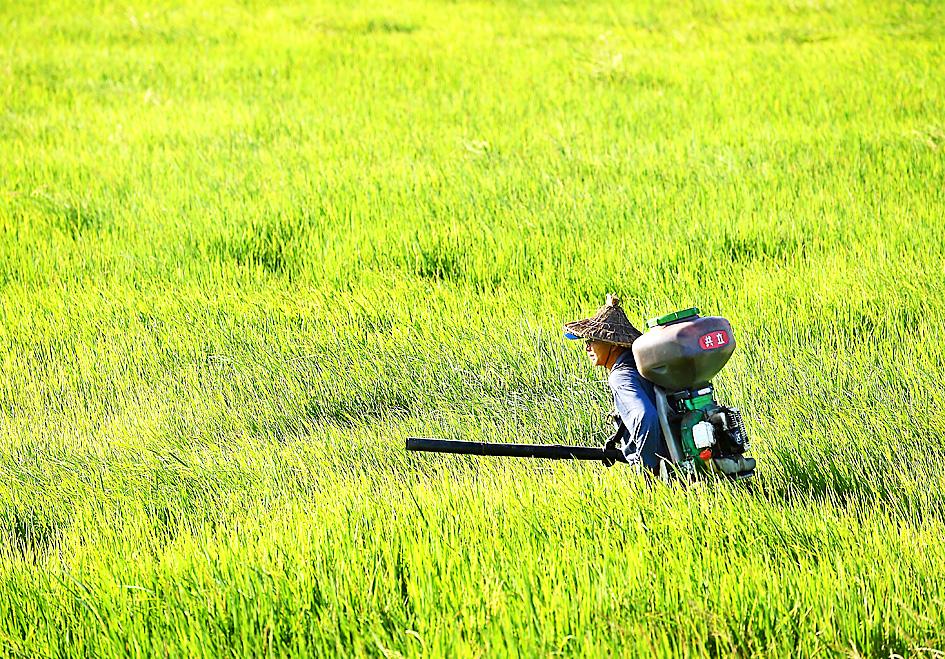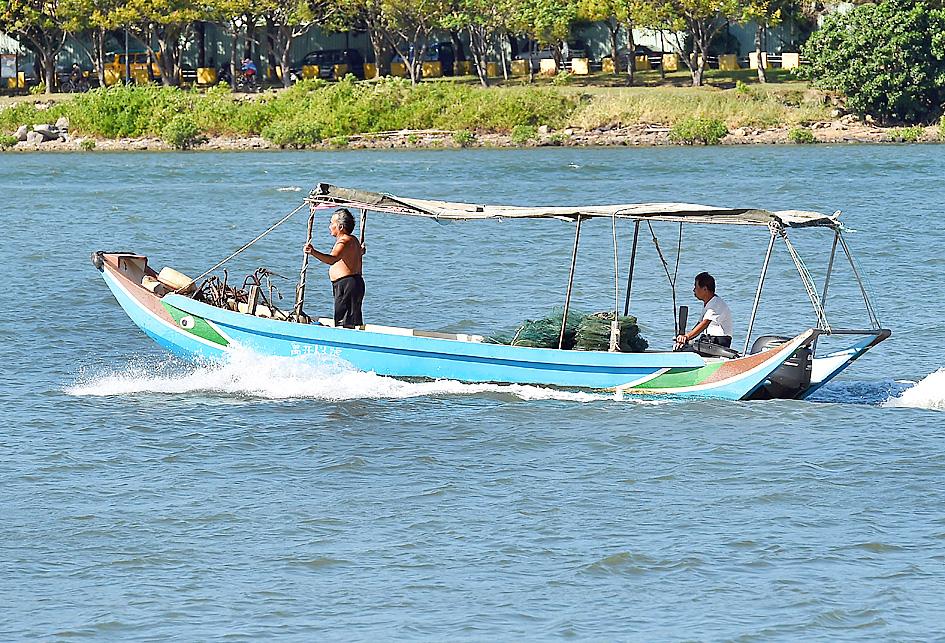The Central Epidemic Command Center (CECC) yesterday announced a partial relaxation of the nation’s outdoor mask mandate as it reported zero new domestically transmitted COVID-19 cases.
Starting tomorrow, people would no longer need to wear masks in certain outdoor areas as long as social distancing can be maintained, said Minister of Health and Welfare Chen Shih-chung (陳時中), who heads the center.
Individuals in the agriculture, forestry, fishing and animal husbandry sectors who work in open spaces, such as fields and fish ponds, as well as people visiting forests and beaches, would not be required to wear masks, he said.

Photo: Chu Pei-hsiung, Taipei Times
However, they would still have to carry a mask with them, as they would have to put it on if there is a sudden surge of people, he added.
Masks became a requirement for those using public transportation in April last year. A comprehensive outdoor mask mandate was introduced after Taiwan’s COVID-19 alert level was raised to level 3 in May, amid a spike in locally transmitted cases.
The alert level was lowered to level 2 on July 27, and several exceptions to mask requirements have since been announced, such as when having a meal, or when driving alone or with family members in an enclosed vehicle.

Photo: Chu Pei-hsiung, Taipei Times
Further adjustments of mask requirements concerning specific occupations and religious events are to be announced today, Chen said.
Meanwhile, yesterday was the fourth consecutive day that zero new domestic cases have been reported, and the second straight day with no deaths, CECC data showed.
However, there were six new imported cases: two Taiwanese and four foreign nationals.
All six had recently arrived in Taiwan and tested positive during quarantine, the CECC said.
To date, Taiwan has confirmed a total of 16,250 COVID-19 cases, of which 14,417 were domestic infections reported after May 15, when the country first recorded more than 100 cases in a single day.
However, since Aug. 15, the daily number of domestic cases has mostly been in the single digits, totaling 114, CECC data showed.
With no new deaths reported yesterday, the number of confirmed COVID-19 deaths remained at 843, with all but 12 recorded since May 15, the data showed.

The Central Weather Administration (CWA) yesterday said it expected to issue a sea warning for Typhoon Fung-Wong tomorrow, which it said would possibly make landfall near central Taiwan. As of 2am yesterday, Fung-Wong was about 1,760km southeast of Oluanpi (鵝鑾鼻), Taiwan’s southernmost point, moving west-northwest at 26kph. It is forecast to reach Luzon in the northern Philippines by tomorrow, the CWA said. After entering the South China Sea, Typhoon Fung-Wong is likely to turn northward toward Taiwan, CWA forecaster Chang Chun-yao (張峻堯) said, adding that it would likely make landfall near central Taiwan. The CWA expects to issue a land

Taiwan’s exports soared to an all-time high of US$61.8 billion last month, surging 49.7 percent from a year earlier, as the global frenzy for artificial intelligence (AI) applications and new consumer electronics powered shipments of high-tech goods, the Ministry of Finance said yesterday. It was the first time exports had exceeded the US$60 billion mark, fueled by the global boom in AI development that has significantly boosted Taiwanese companies across the international supply chain, Department of Statistics Director-General Beatrice Tsai (蔡美娜) told a media briefing. “There is a consensus among major AI players that the upcycle is still in its early stage,”

The Central Weather Administration (CWA) yesterday said it is expected to issue a sea warning for Typhoon Fung-wong this afternoon and a land warning tomorrow. As of 1pm, the storm was about 1,070km southeast of Oluanpi (鵝鑾鼻), Taiwan’s southernmost point, and was moving west-northwest at 28 to 32kph, according to CWA data. The storm had a radius of 250km, with maximum sustained winds of 173kph and gusts reaching 209kph, the CWA added. The storm is forecast to pass near Luzon in the Philippines before entering the South China Sea and potentially turning northward toward Taiwan, the CWA said. CWA forecaster Chang Chun-yao (張峻堯) said

Japanese Prime Minister Sanae Takaichi yesterday said that China using armed force against Taiwan could constitute a "survival-threatening situation" for Japan, allowing the country to mobilize the Japanese armed forces under its security laws. Takaichi made the remarks during a parliamentary session while responding to a question about whether a "Taiwan contingency" involving a Chinese naval blockade would qualify as a "survival-threatening situation" for Japan, according to a report by Japan’s Asahi Shimbun. "If warships are used and other armed actions are involved, I believe this could constitute a survival-threatening situation," Takaichi was quoted as saying in the report. Under Japan’s security legislation,